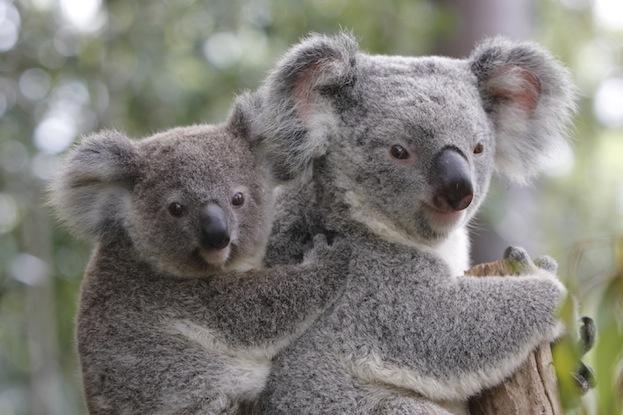Global wildlife could plunge to a 67 per cent level of decline in just the 50-year period ending this decade as a result of human activities, according to WWF’s Living Planet Report 2016. The report shows how people are overpowering the planet for the first time in Earth’s history and highlights the changes needed in the way society is fed and fuelled.

According to the report, global populations of fish, birds, mammals, amphibians and reptiles have already declined by 58 per cent between 1970 and 2012, the most recent year with available data. This places the world on a trajectory of a potential two-thirds decline within a span of the half-century ending in 2020.
Fortunately, 2020 is also a year of great promise. In that same year, commitments made under the Paris climate deal will kick in, and the first environmental actions under the globe’s new sustainable development plan are due. If implemented, these measures, along with meeting international biodiversity targets set for 2020, can help achieve the reforms needed in the world’s food and energy systems to protect wildlife across the globe.
“Wildlife is disappearing within our lifetimes at an unprecedented rate,” said Marco Lambertini, Director General of WWF International. “This is not just about the wonderful species we all love; biodiversity forms the foundation of healthy forests, rivers and oceans. Take away species, and these ecosystems will collapse along with the clean air, water, food and climate services that they provide us. We have the tools to fix this problem and we need to start using them now if we are serious about preserving a living planet for our own survival and prosperity.”
The WWF report uses the Living Planet Index, provided by the Zoological Society of London (ZSL), to monitor trends in wildlife abundance. This index reports how wildlife populations have changed in size, rather than the specific number of animals that have been lost or gained.
“Human behaviour continues to drive the decline of wildlife populations globally, with particular impact in freshwater habitats. Importantly however, these are declines, they are not yet extinctions – and this should be a wake-up call to marshal efforts to promote the recovery of these populations,” said Professor Ken Norris, Director of Science at ZSL.
Additional evidence of a man-made era
The top threats to species identified in the report are directly linked to human activities, including habitat loss, degradation and overexploitation of wildlife.
The report’s findings provide additional evidence that the planet is entering completely unchartered territory in its history in which humanity is shaping changes on the Earth, including a possible sixth mass extinction. Researchers are already calling this period the Anthropocene. Understanding why we are moving into this new epoch enables us to identify solutions for restoring the ecosystems we depend upon.
According to the report, food production to meet the complex demands of an expanding human population is leading the race in the destruction of habitats and overexploitation of wildlife. At present, agriculture occupies about one-third of the Earth’s total land area and accounts for almost 70 per cent of water use.
The Living Planet Report 2016 outlines solutions to reform the way we produce and consume food to help ensure that the world is well-fed in a sustainable way. The report also focuses on the fundamental changes required in the global energy and finance systems to meet the sustainability needs of future generations.
Pushing the planet to its limits
Living Planet Report 2016 draws on leading research about the scale and impact of human activity on our planet. One such framework, developed by the Stockholm Resilience Centre in collaboration with partners, demonstrates that humanity has surpassed four out of nine Planetary Boundaries – safe thresholds for critical Earth system processes that maintain life on the planet.
In a special foreword in the report, Planetary Boundaries lead researcher Johan Rockström underlines the need for an urgent transition to a world that works within Earth’s safe operating space.
The report also features research from the Global Footprint Network that shows that while we only have one Earth, humanity is currently using the resources of 1.6 planets to provide the goods and services we use each year.
“No matter how you add it up, the math does not look good. The more we continue to exceed Earth’s limits, the more damage we do to our own future,” said Lambertini. “We are at a decisive moment in time when we can seize the solutions to steer our food, energy and finance systems in a more sustainable direction.”
Charting the way forward
The WWF report demonstrates that we need to rethink how we produce, consume, measure success and value the natural environment.
Adequately protecting the environment alongside economic and social development requires an urgent system change by individuals, businesses and governments to move from a short-sighted approach to a visionary approach that values future generations.
In one example, the report shows how smallholder farmers in Kenya work with local authorities and the food industry to manage the natural resources of Lake Naivasha, the country’s second largest freshwater body, a biodiversity hotspot and a significant contributor to its GDP.
The report also illustrates the positive momentum that is building by highlighting recent global agreements on climate change and sustainable development. In particular, the report recognizes the 2030 Agenda for Sustainable Development as an essential guide to decision-making that can ensure that the environment is valued alongside economic and social interests.
“A strong natural environment is the key to defeating poverty, improving health and developing a just and prosperous future. We have proven that we know what it takes to build a resilient planet for future generations, we just need to act on that knowledge,” Lambertini added.
Living Planet Report 2016: Risk and resilience in a new era is the 11th edition of WWF’s biennial flagship publication. The report tracks over 14,000 vertebrate populations of over 3,700 species from 1970 to 2012.
